Our plan for the evening in Brasilia entailed visits to some of the places we had already seen in the daylight, since we realised they were lit at night. Still, before the nightfall, we also wanted to visit a couple of temples, i.e., the religious places. We had read about them and concluded they were worth the visit.
So, we headed for one of the streets marked as “south,” but first we had to cross the avenue leading around the Monumental Axis at the time when there were a lot of cars driving there (the late afternoon rush hour). We had already had that experience earlier in the morning and wondered whether the traffic lights close to our hotel worked at all or this was because there were so few pedestrians that the traffic lights were just an ornament and the street was used for vehicles alone. Still, even the other few pedestrians who wanted to cross to the other side seemed as puzzled by the duration of the traffic light as the two of us, so some of them crossed those six lanes when it was still red not wanting to wait any longer or they just thought the traffic lights were broken. Since they appeared to be local people, the two of us eventually decided to follow suit. With a lot of concentration, we carefully considered when to go and we did it, but we certainly did not feel happy about it.
Be as it may, we caught one bus, and then another, and then we walked a little, and then just in time before the final traces of daylight disappeared we finally saw the Temple of Good Will.
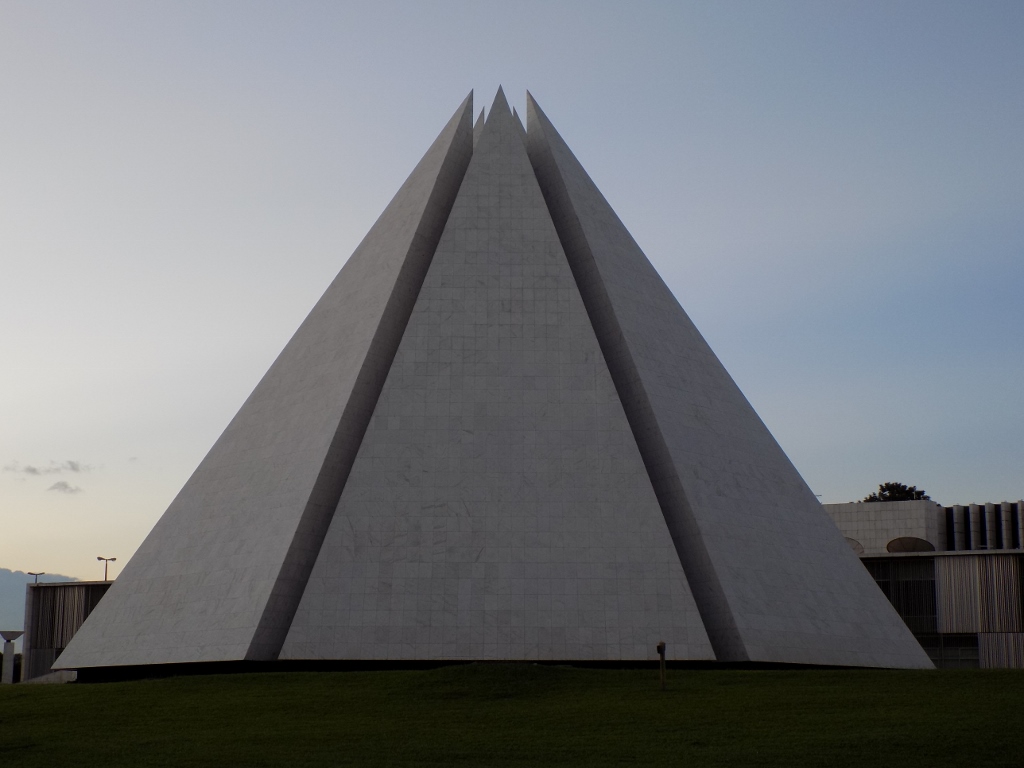 Temple of Good Will
Temple of Good Will
This is a temple that was built in 1989 by a non-governmental organisation, the Legion of Good Will, as a symbol of universal solidarity. The temple was built in the shape of a right heptagonal pyramid on top of which there is a large 21 kg quartz crystal. The dimensions are also such that they reflect mystical number seven – the edifice is 21 m high, while the diameter of the base is 28 m. As the intention of the building of this temple was to cherish the brotherhood among all “earthly and celestial beings” that belong to all ethnic groups, religions, philosophies and political affiliations, as well as atheists, the place itself is a mixture of Christian, ancient Egyptian and New Age elements. The temple is open 24 hours a day and therefore anyone who wants to visit it may stop by at any time they feel like it.
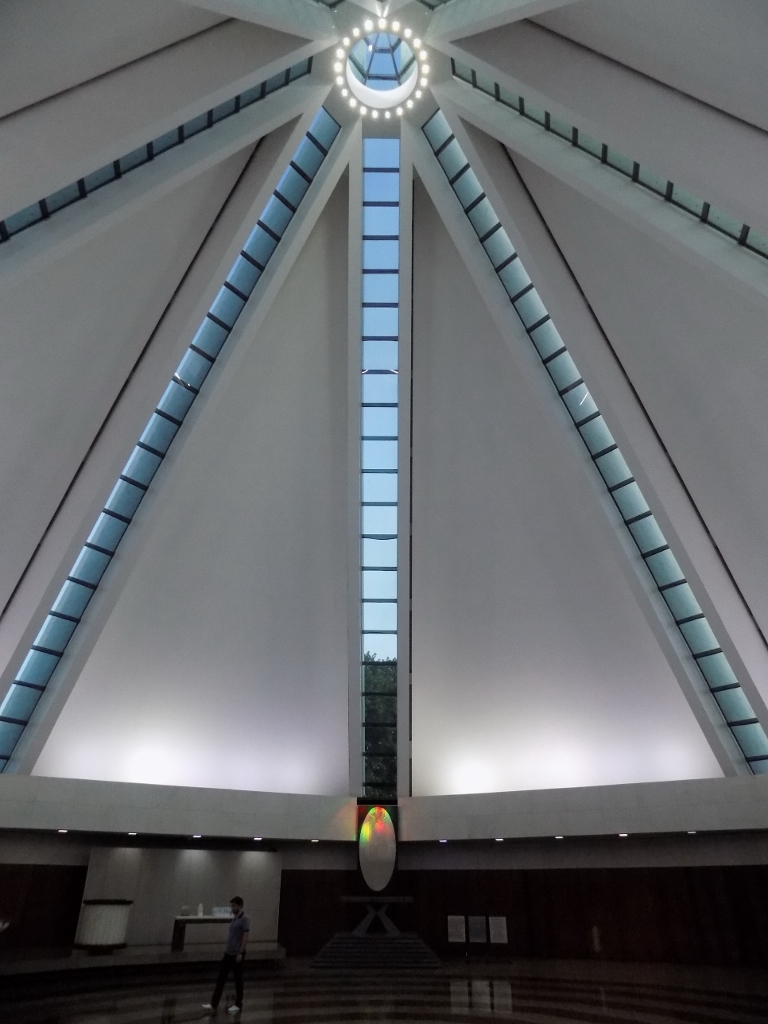 Temple of Good Will: there is an altar in the middle, while through the glass panes on the roof it may be seen that the sky outside is still blue
Temple of Good Will: there is an altar in the middle, while through the glass panes on the roof it may be seen that the sky outside is still blue
When you enter the temple through a spacious corridor, first you come across a part where there are benches to the right and left from the entrance, but the central section is entirely empty. Or rather, there is no furniture in the centre, but on the floor there are two spirals made of granite that converge in the middle of the space. The idea is that one walks slowly along the black path and when you get to the very centre, you move to the white one and follow it to get out. Both Sneža and I were very keen on doing this, but we realised we first had to take our shoes off, since this “walk” is done barefoot. The experience was relaxing.
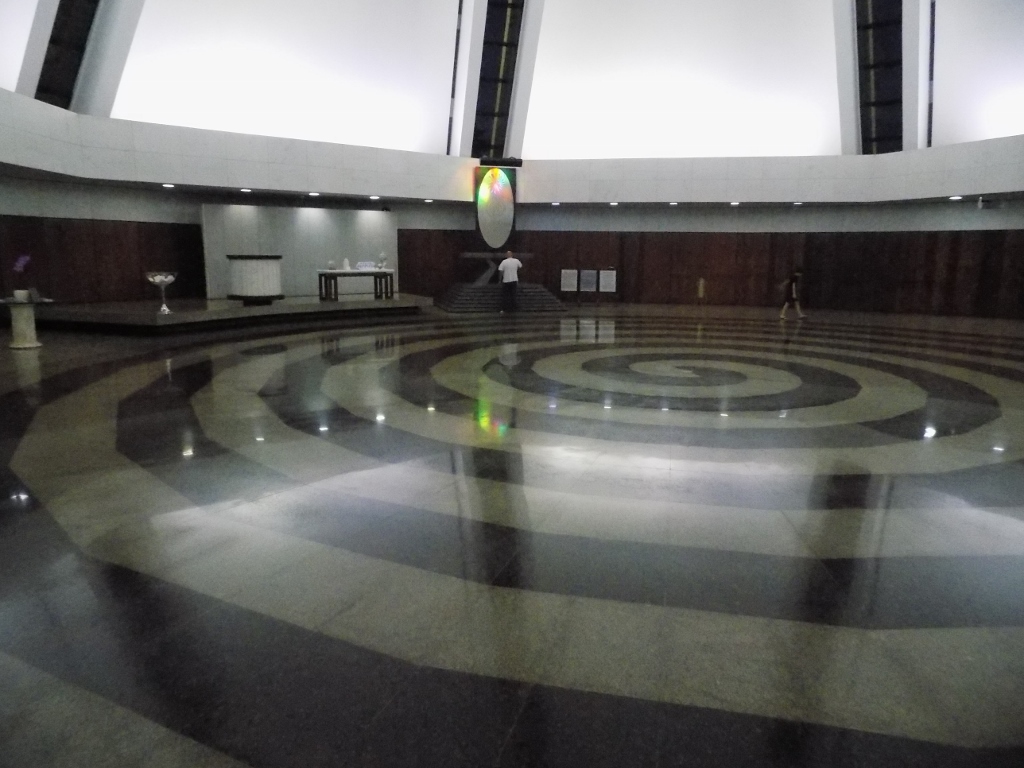 Temple of Good Will: the spirals in the middle
Temple of Good Will: the spirals in the middle
When we first came, there were only a couple of other people inside, so the atmosphere was really very peaceful and harmonious. After the pleasant walk along the spirals, we walked around the temple a little more and then we moved on. Still, we admired the temple from the outside for a little while yet, but by now the sky was completely dark.
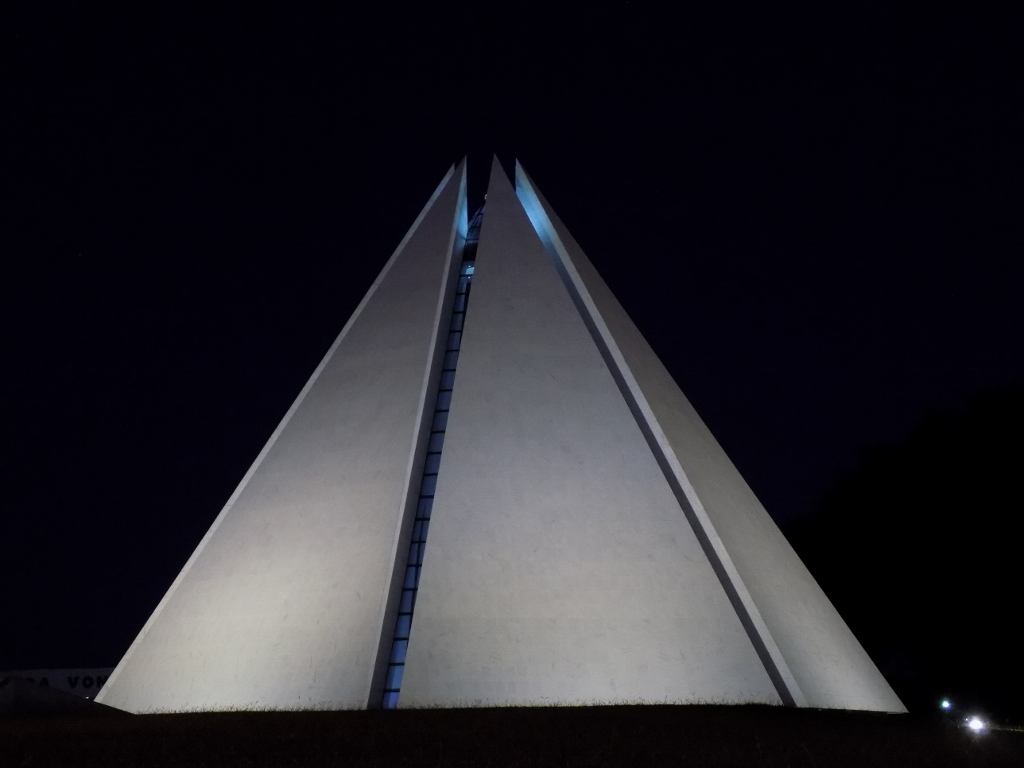 Temple of Good Will at night
Temple of Good Will at night
Then we had to wait for a bus to take us back in the direction of the Monumental Axis. We did wait for a while, but we comforted ourselves that we were not alone at the bus stop. On the other hand, already before 9 in the evening, there was almost nobody out in the streets and even vehicles were few. Shops close around half past 7 and then everything calms down slowly. Still, after a few buses that we had to skip (we no longer dared enter buses that did not have the exact number we wanted), we finally transferred to another temple.
This time it was a catholic church – Don Bosco Sanctuary, which is very important since Don Bosco is the patron saint of Brasilia. Giovanni Bosco, usually called Don Bosco (in Portuguese –Dom Bosco), was an Italian priest from the 19th century. He dedicated his life to the work with the young, especially with street children and delinquents, and his approach was based on love and not on punishment. During his lifetime he was very popular, but there were also a lot of controversies in connection with him. So, although motions to canonise him were filed right after his death (he died in 1888), he was declared a saint only in 1934 when he received the title “Father and Teacher of Youth.”
Certainly, his work with the young was not the reason why he was declared the protector of Brasilia, but it was rather his prophecy in which he said that in the future, between the 15th and the 20th parallels, a great civilisation would be built around an artificial lake and it would become the land of plenty. Since Brasilia is located precisely between parallels 15 and 20, and there is also an artificial lake, it was quite logical to expect the continuation of the prophesy and hence Don Bosco was declared the patron saint of the city.
So, we did get to this church, but it was already closed. Still, even closed it was absolutely impressive from the outside, so Sneža and I immediately agreed to return here the following evening but before the closing time, i.e., before 9 pm.
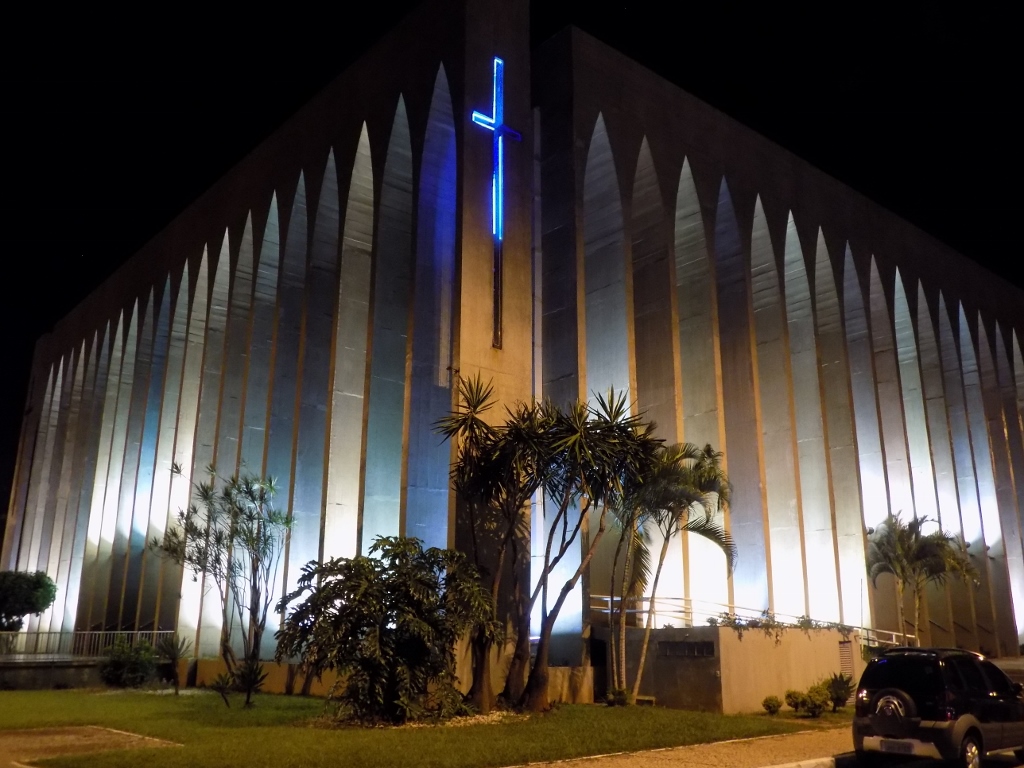 Don Bosco Sanctuary
Don Bosco Sanctuary
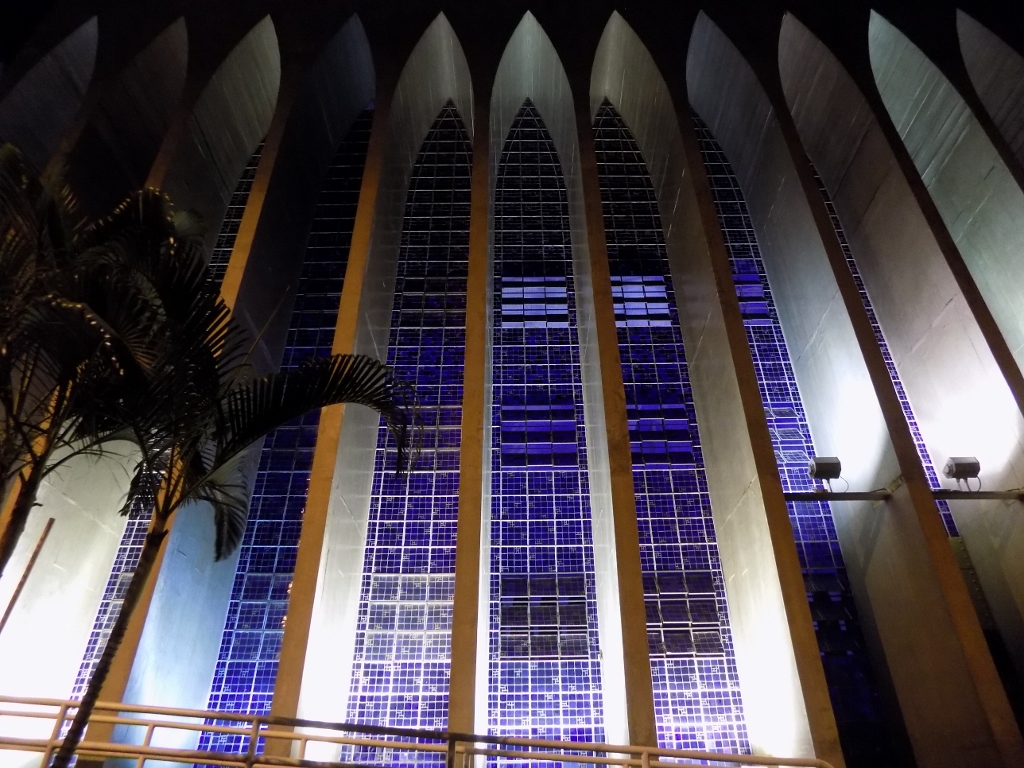 Don Bosco Sanctuary
Don Bosco Sanctuary
Since there were almost no other people in the streets, we decided it was better to wait for a bus for a longer period of time in order to get to the Monumental Axis than to try to walk there. And so it was. After all, we did have to get down the large avenue a little, since our plan involved a visit to yet another church and that was the Metropolitan Cathedral. We had already presumed it was closed, but our plan was actually to see it only from the outside, at this hour, when it was dark while the church was lit. And we were not disappointed.
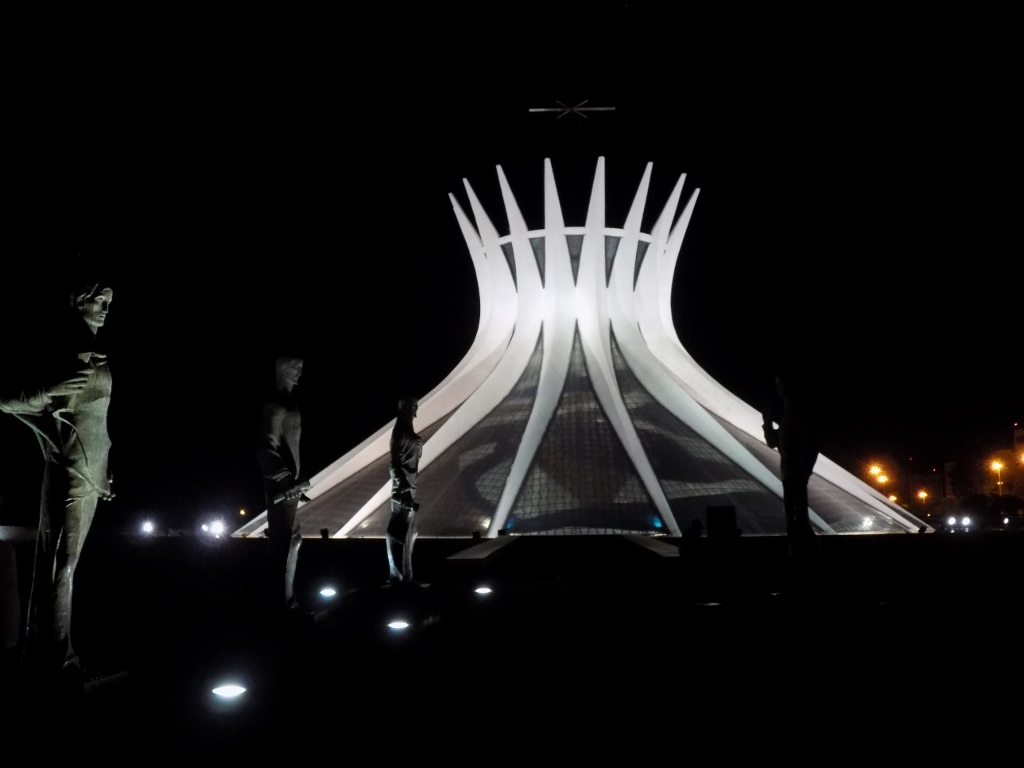 Metropolitan Cathedral and the four Evangelists in front of it
Metropolitan Cathedral and the four Evangelists in front of it
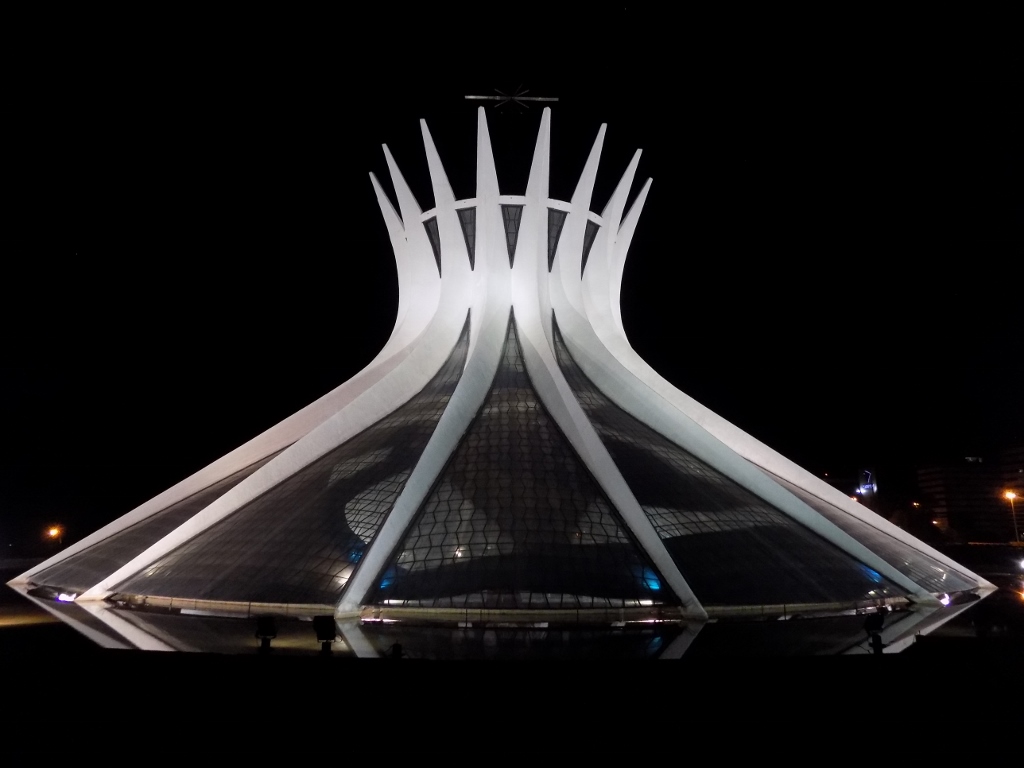 Metropolitan Cathedral
Metropolitan Cathedral
The design of the cathedral is such that around the roof there is a shallow ring with water in it. This naturally creates fantastic images. I found it particularly impressive at night.
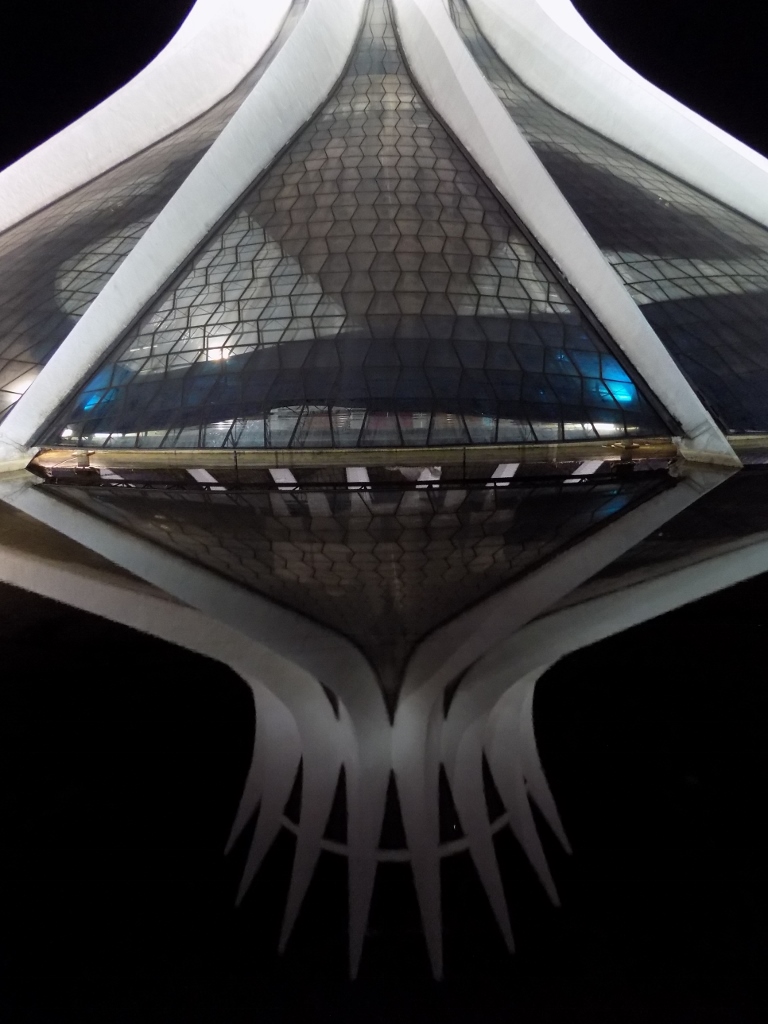 Metropolitan Cathedral
Metropolitan Cathedral
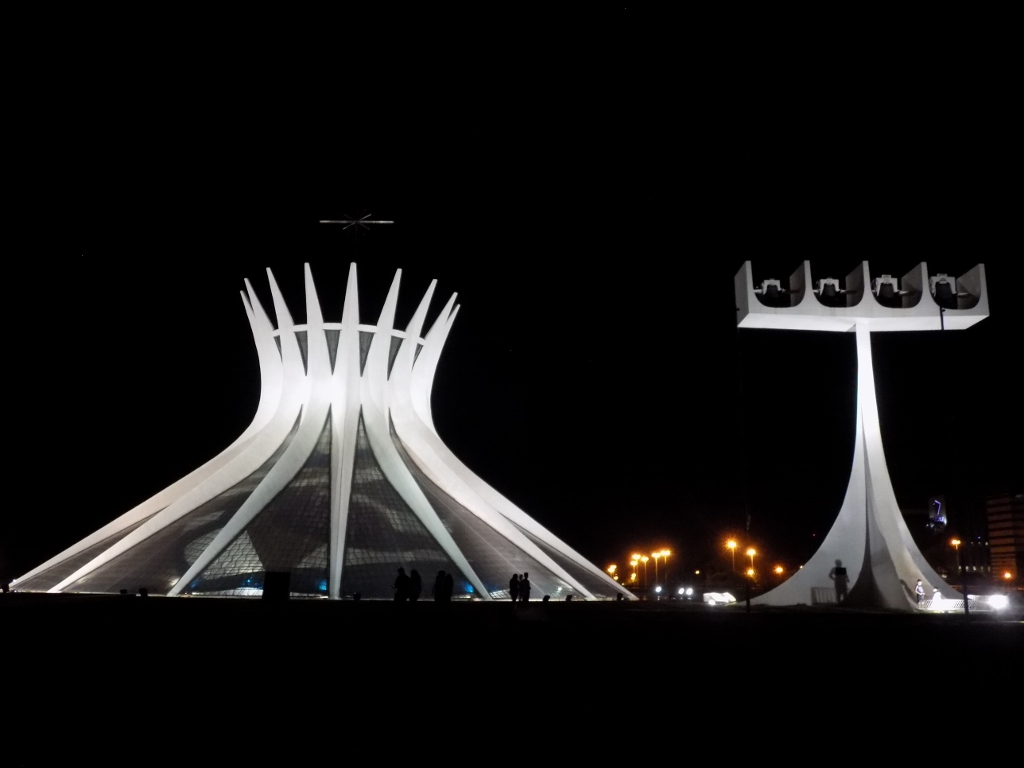 Metropolitan Cathedral and the bell-tower
Metropolitan Cathedral and the bell-tower
Full of impressions, we returned to our hotel room in order to have a good rest since the following day we had another excursion by a coach.
This time we went to the small town of Pirenópolis. This involved again a longish coach drive, but we did not mind it. We were only concerned about getting back to Brasilia by at least 8 pm (more about the reason for this a little later).
I was not bored during the drive, for I love looking out of the window. Thus I noticed there were many more large fields here covered in crops.
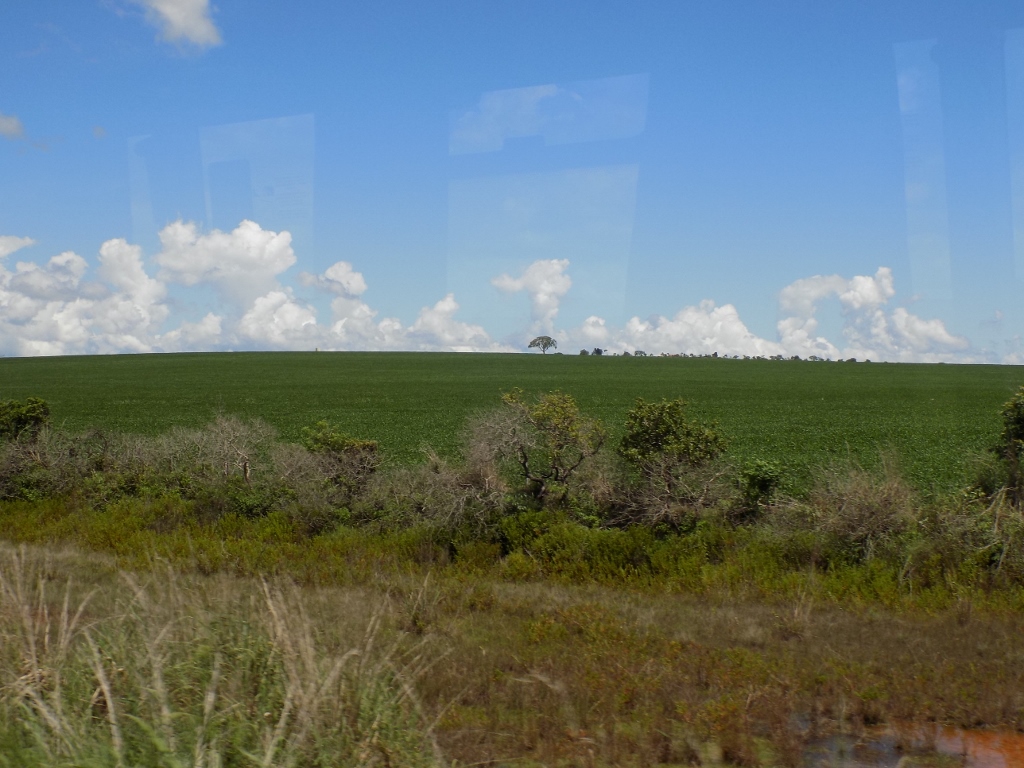 A sight between Brasilia and Pirenópolis
A sight between Brasilia and Pirenópolis
But there were also quite different, although not less interesting sights.
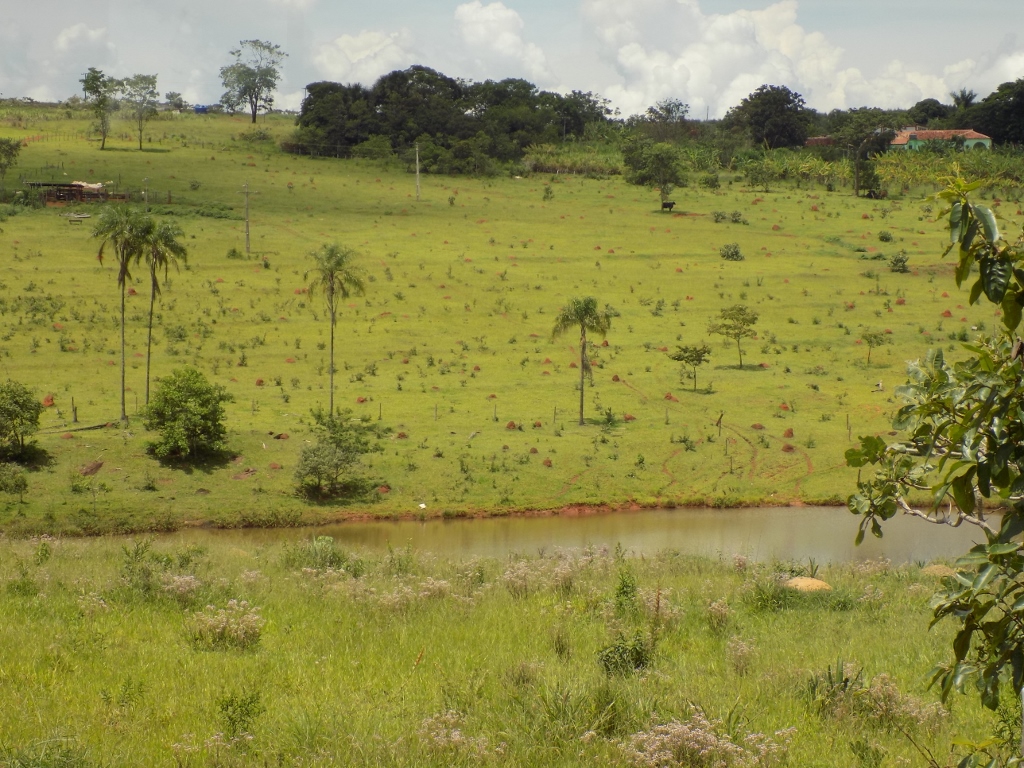 A sight between Brasilia and Pirenópolis
A sight between Brasilia and Pirenópolis
When we reached our destination, we were greeted (again) by incessant heat and bright Sun, but trying to stick to the shaded sections we got to the central part of the town.
Pirenópolis is an interesting place, most of the buildings reflect the colonial Portuguese architecture, but there are some elements made in the Art Deco style that seem completely out of place and unexpected for a small town in the interior of Brazil. Our goal was to walk around the place a little, as well as to get to at least one of the 73 waterfalls that exist in the surroundings of this small town.
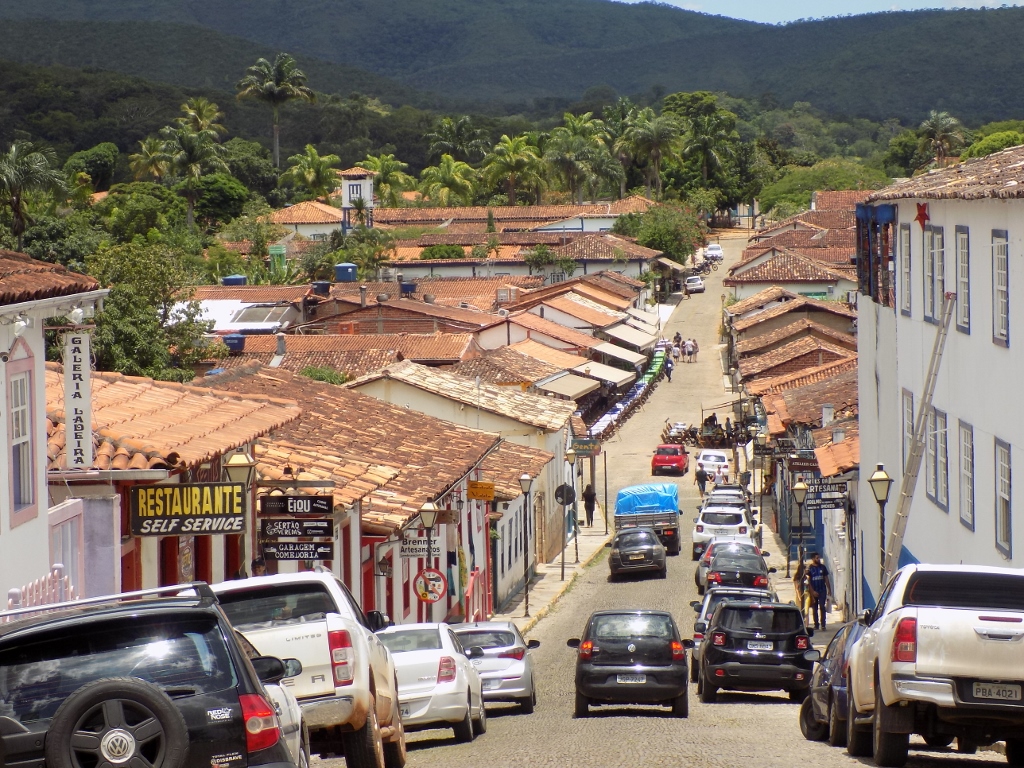 Pirenópolis
Pirenópolis
To start with we visited the first church we came across and that was the Church of Our Lady of the Rosary or the Matrix Church (Igreja Matriz) as it is often called.
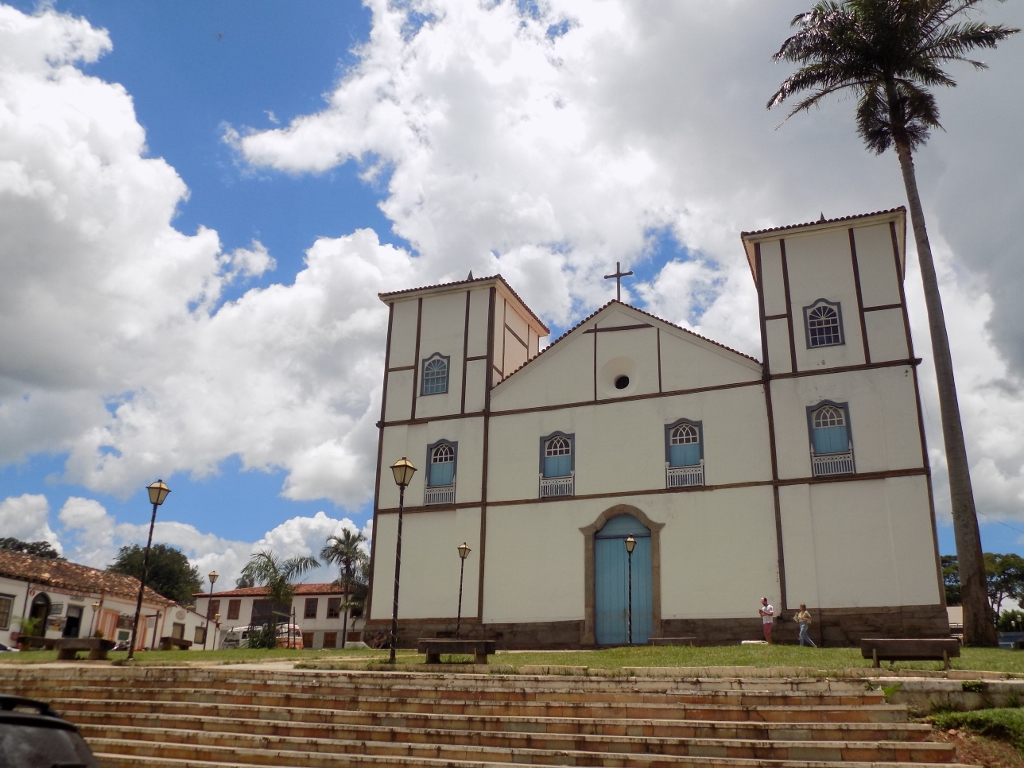 Church of Our Lady of the Rosary
Church of Our Lady of the Rosary
Then we went to a tourist information office since we wanted to inquire about the possibility to get to one of the waterfalls that are close to the town. On our way we passed by some really cute houses that are found in abundance in this place.
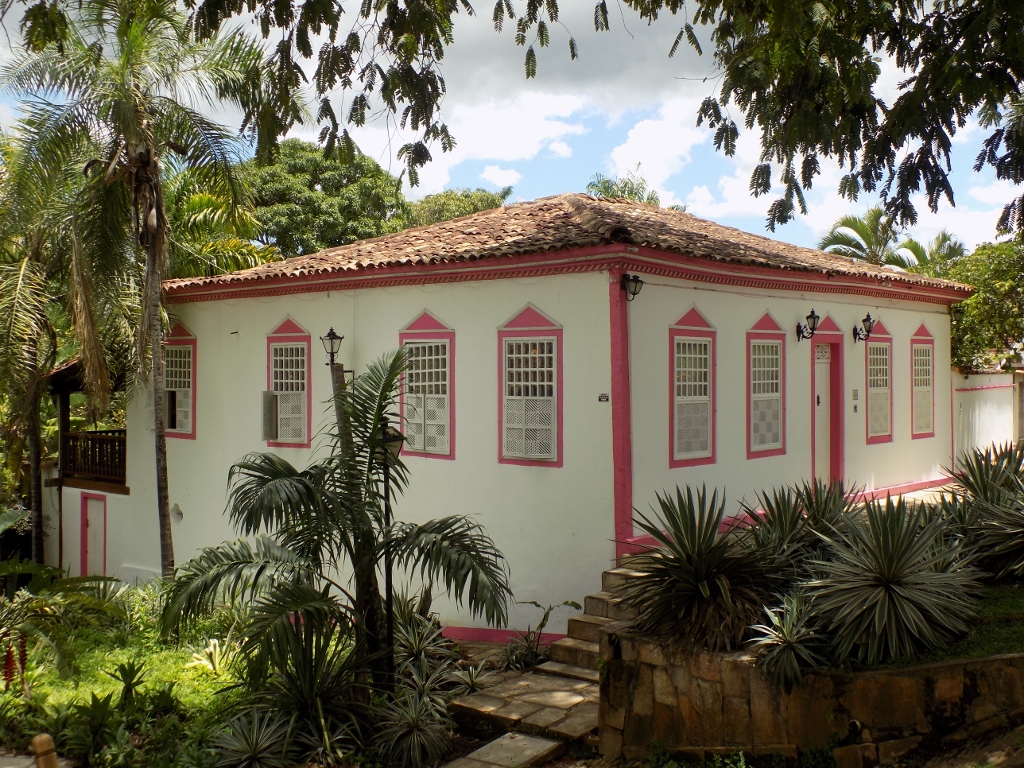 One of the houses in Pirenópolis
One of the houses in Pirenópolis
At the info office we found a girl who spoke some English and that helped us a great deal. We realised that all the waterfalls were in the vicinity, but not close enough for people to walk there, which meant we had to take a taxi. So, we agreed to go to one of the closer waterfalls, in order to see at least something of this kind, and then to return to the centre and walk around for a little bit.
And so we did exactly that. The taxi driver took us to the cascades called “Half Moon” (Meia Lua) and there are also cascades called “Old Plant” (Usina Velha) nearby. We walked by the waterfalls for a little while, I soaked my feet in the fresh waters and that was it. Soon we were back in the town.
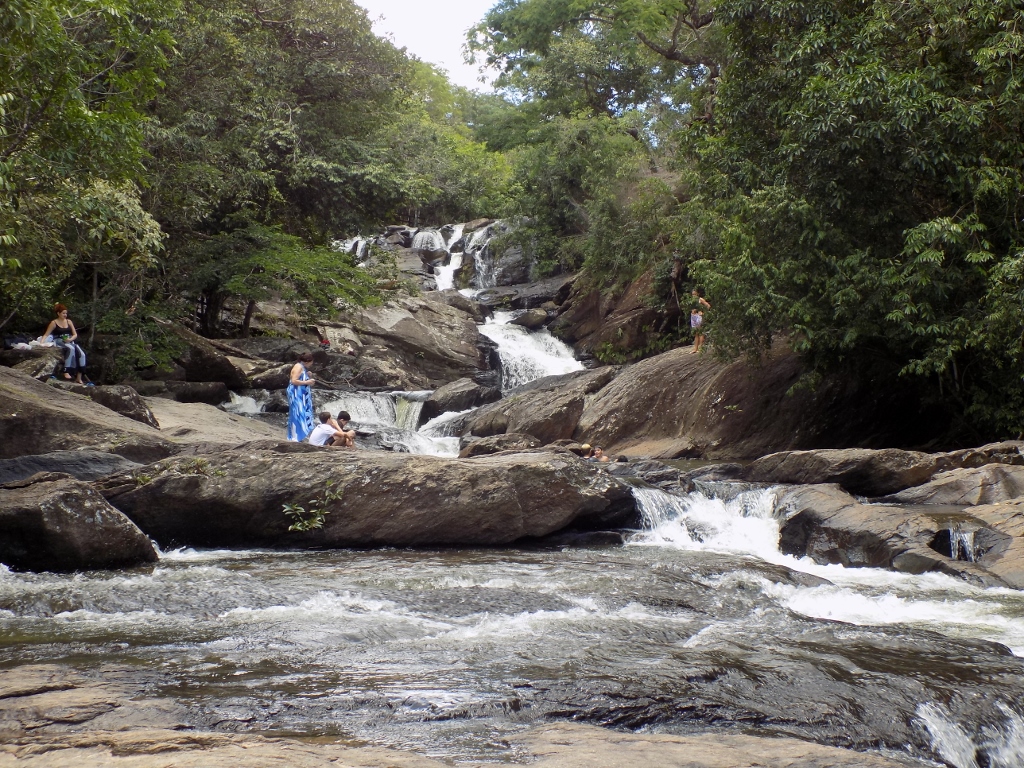 Cascades near Pirenópolis
Cascades near Pirenópolis
In the street through which we passed by the taxi when entering the town, I saw a large number of incredibly colourful and lovely houses, but we did not stop there nor did we want to leave the taxi at that point since it was just too hot and we were not in the mood for any extended walk, as we had already planned a visit of the centre. Yet, we did ask the taxi driver to stop briefly by the Church of Our Lord of Good End (Igreja de Nosso Senhor do Bonfim), which refers to the moment when Christ was crucified.
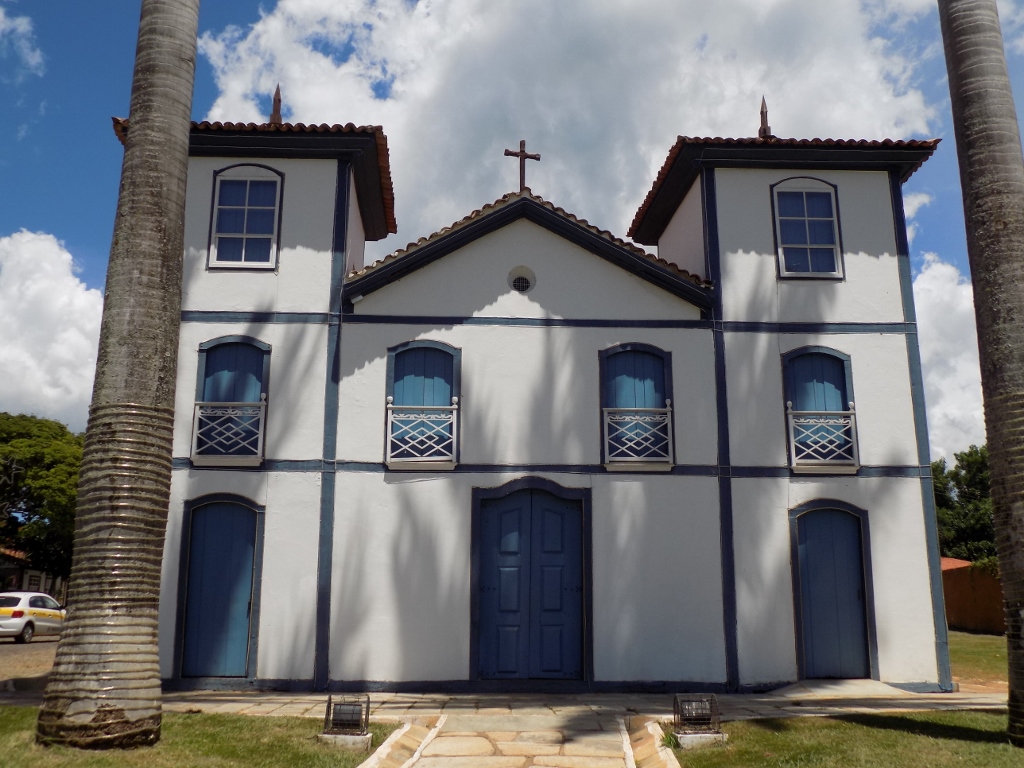 Church of Our Lord of Good End
Church of Our Lord of Good End
Several hundred metres farther, when we finally got out of the taxi, I first sat on a bench in order to have a photo of me and a “local guy” taken.
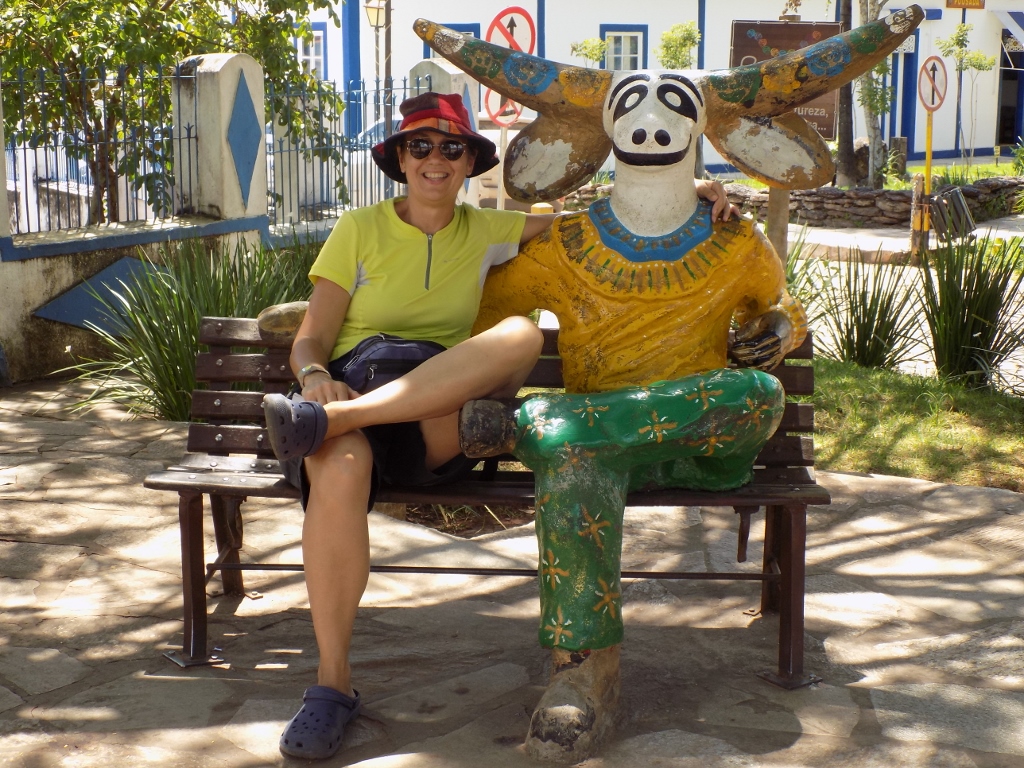 A brief respite in the shade
A brief respite in the shade
Namely, since the middle of the 19th century, every year in May or June, there is a Festival of Divine Holy Spirit (Festa do Divino Espírito Santo) organised in Pirenópolis. During the festival, there is a parade of people who either walk or ride horses, but it is important that they are all masked, most often as a jaguar or an ox. Still, there is also a lot of freedom in the selection of the costumes. As this is one of the central events of this town, during our brief visit we often came across gypsum sculptures, mostly depicting the ox mask. Also, we stopped by the Museum of the Devine (Museu do Divino) where we saw exhibits dedicated precisely to this festival.
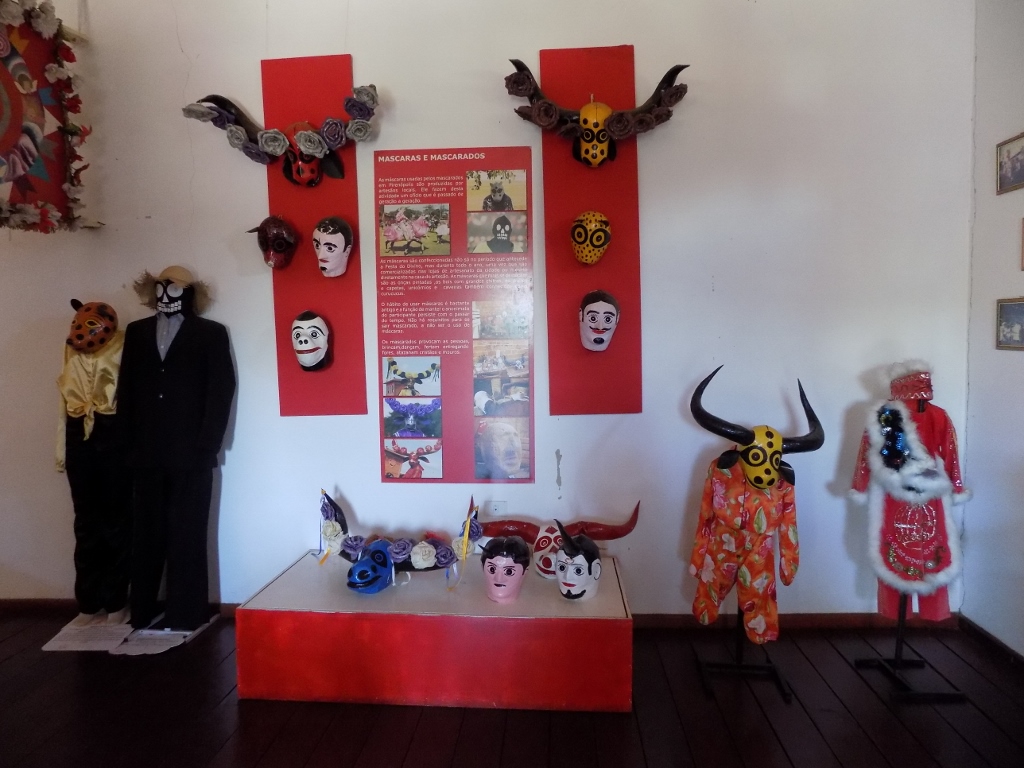
Museum of the Devine
Then we sat at one of the numerous restaurants where we had a nice break and rested in the shade, while I also bought an ice-cream which was sold by a young man from a “refrigerator” made of styrofoam, placed on wheels for easier transportation.
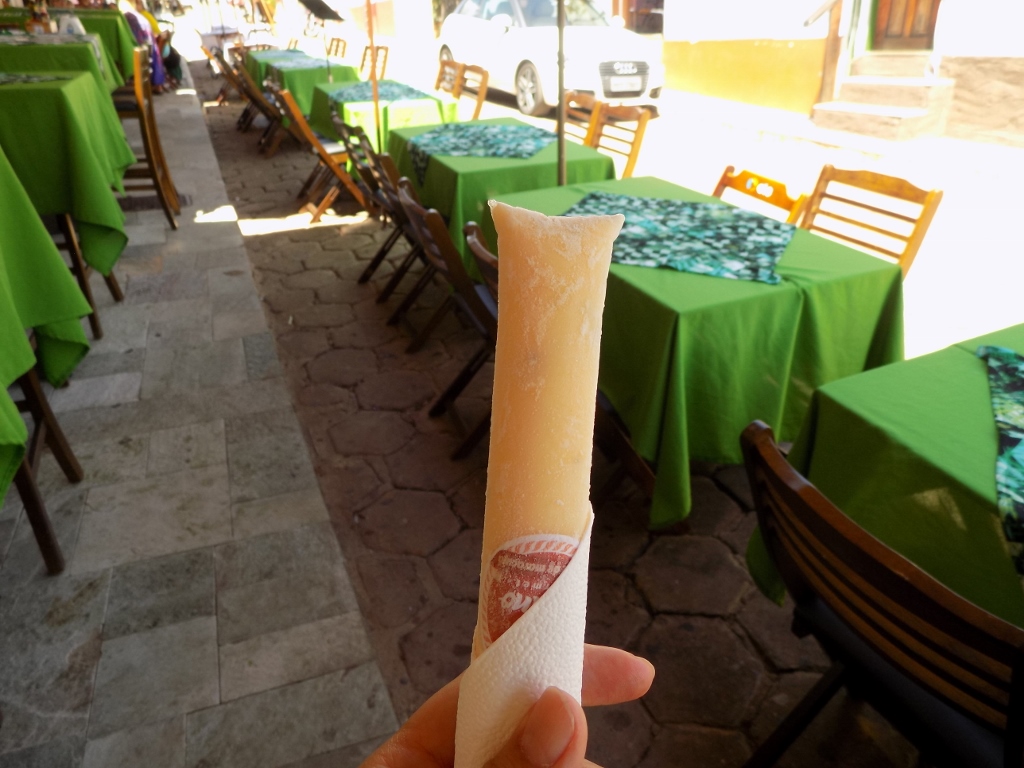 Passion-fruit ice-cream
Passion-fruit ice-cream
The ice-cream is sold in the form of a stick wrapped in a thin and tight nylon cover. It is obvious that when the ice-cream is made, they use “tubes” made of thin and narrow plastic wrap, which are then filled with the creamy mass, and then the tubes are sealed tightly and frozen. The eating technique is quite simple. With your teeth you tear an end of the plastic wrap and at first you start pushing the ice-cream out, but later you can additionally tear the plastic wrap and peel it off the ice-cream. The point of this whole story does come eventually to the fact that the ice-cream was tasty and it cooled me pleasantly.
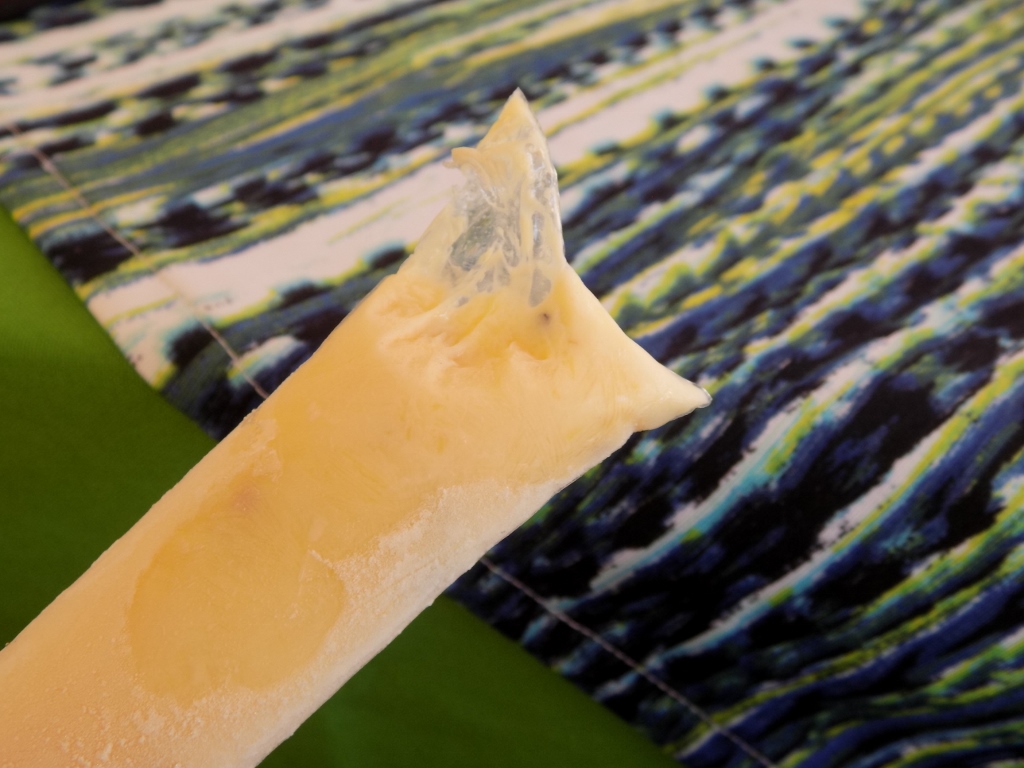 I have just started to eat the ice-cream
I have just started to eat the ice-cream
We continued our walk around the place by crossing the bridge over the Rio das Almas in which some local people enjoyed the refreshing swimming.
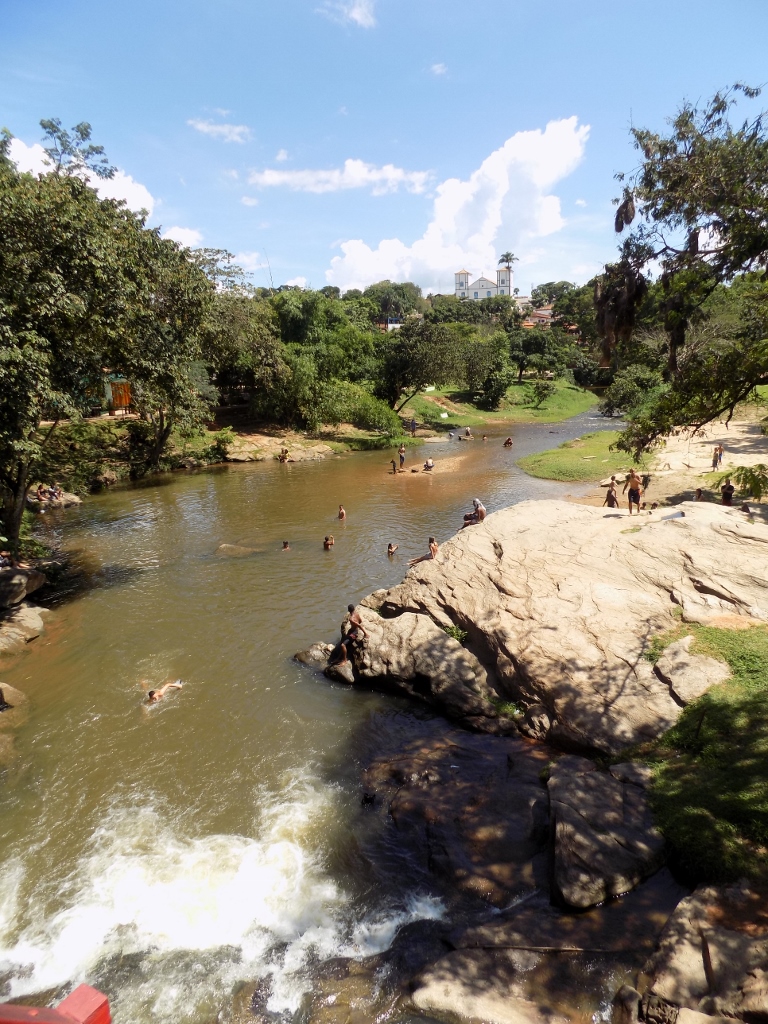 Rio das Almas with the Church of Our Lady of the Rosary in the distance
Rio das Almas with the Church of Our Lady of the Rosary in the distance
The reason why we crossed the river was to go to the Church of Our Lady of Mount Carmel (Igreja Nossa Senhora do Carmo), where there is also a small Museum of Sacral Art.
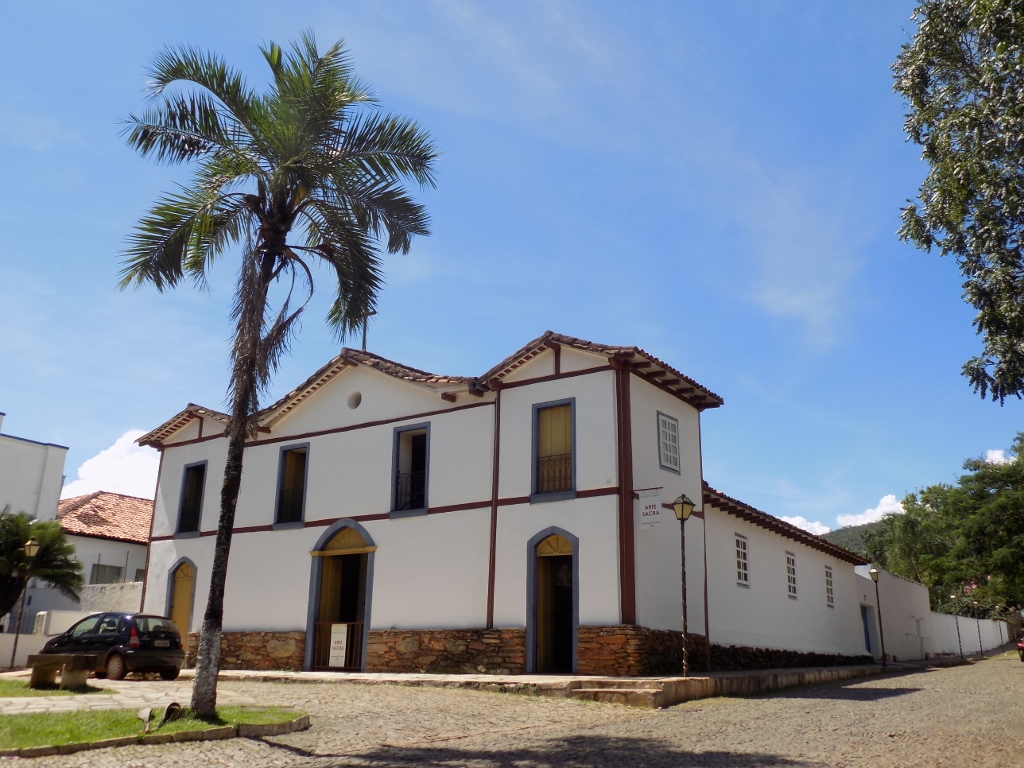 Church of Our Lady of Mount Carmel
Church of Our Lady of Mount Carmel
And then we just had to return to the coach terminal. Still, before that, it was nice looking again back at this lovely little town.
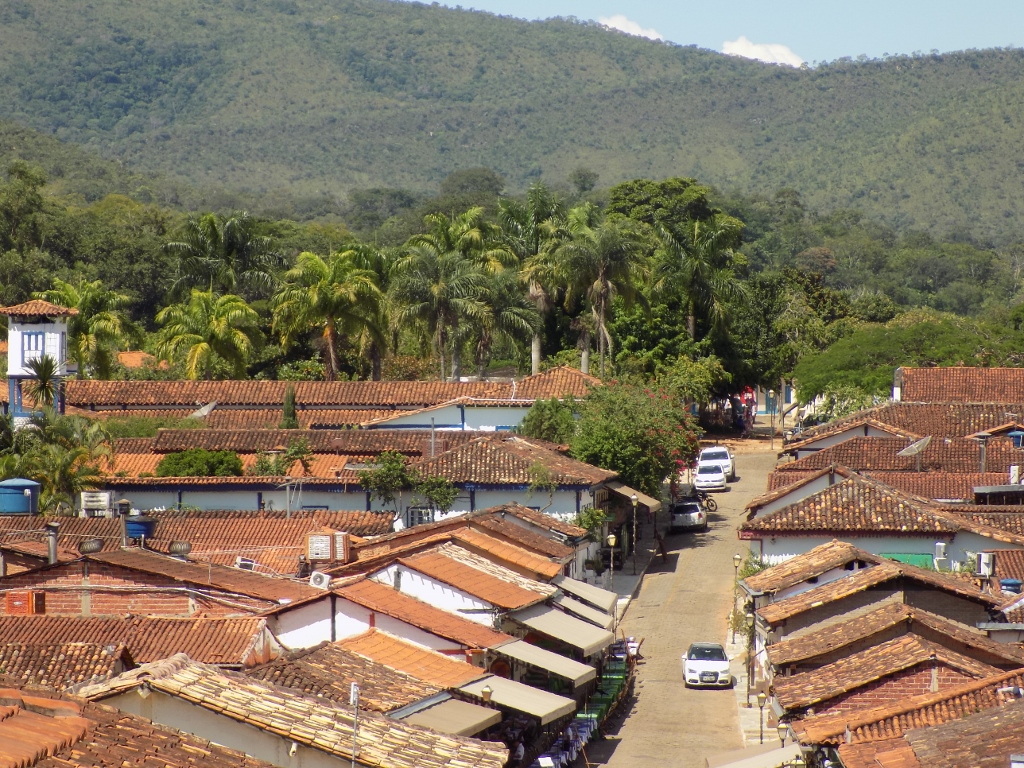 Pirenópolis
Pirenópolis
At the coach terminal we had certain problems about buying the tickets, but this was solved in the end. We were additionally worried since we had a plan for the evening in Brasilia, while the coach was rather late even arriving in Pirenópolis. Still, despite coming to the terminal in Brasilia later than planned, soon we caught an underground and transferred to the Central Station of city busses where we exited from the underground right at the place from which the bus we needed was about to leave. Thus we managed to reach Don Bosco Sanctuary on time, i.e., before the church was closed. We would have been extremely sorry if we hadn’t seen it at night, although I must admit that the impression was less grand than expected.
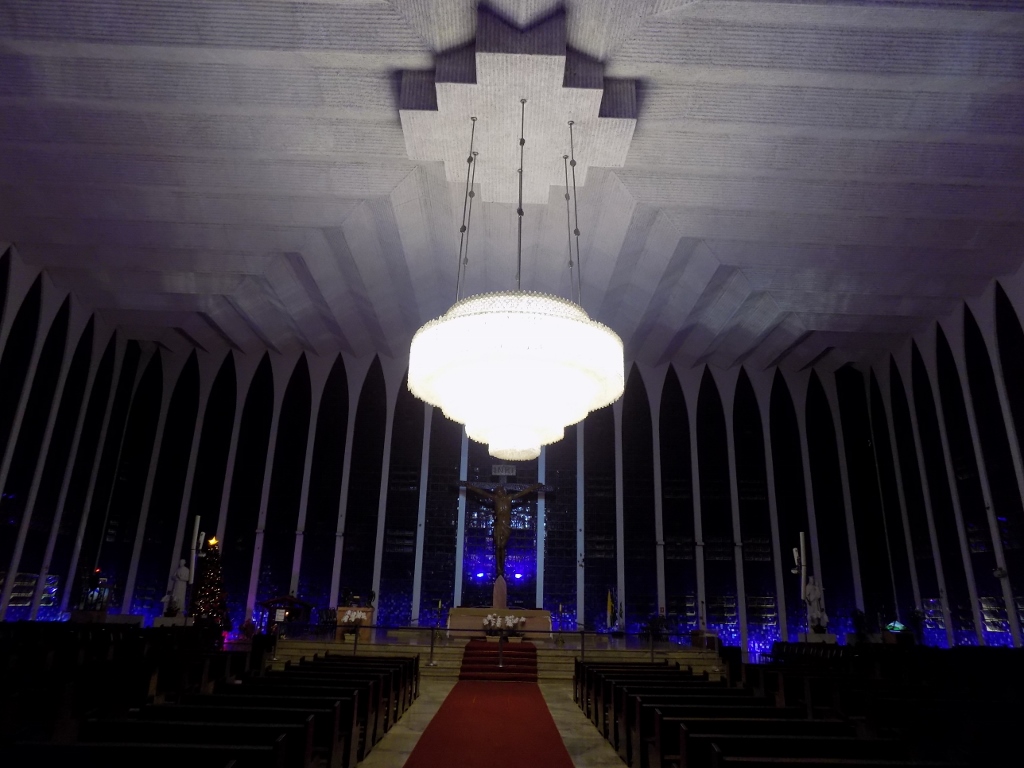 Don Bosco Sanctuary when it is dark outside
Don Bosco Sanctuary when it is dark outside
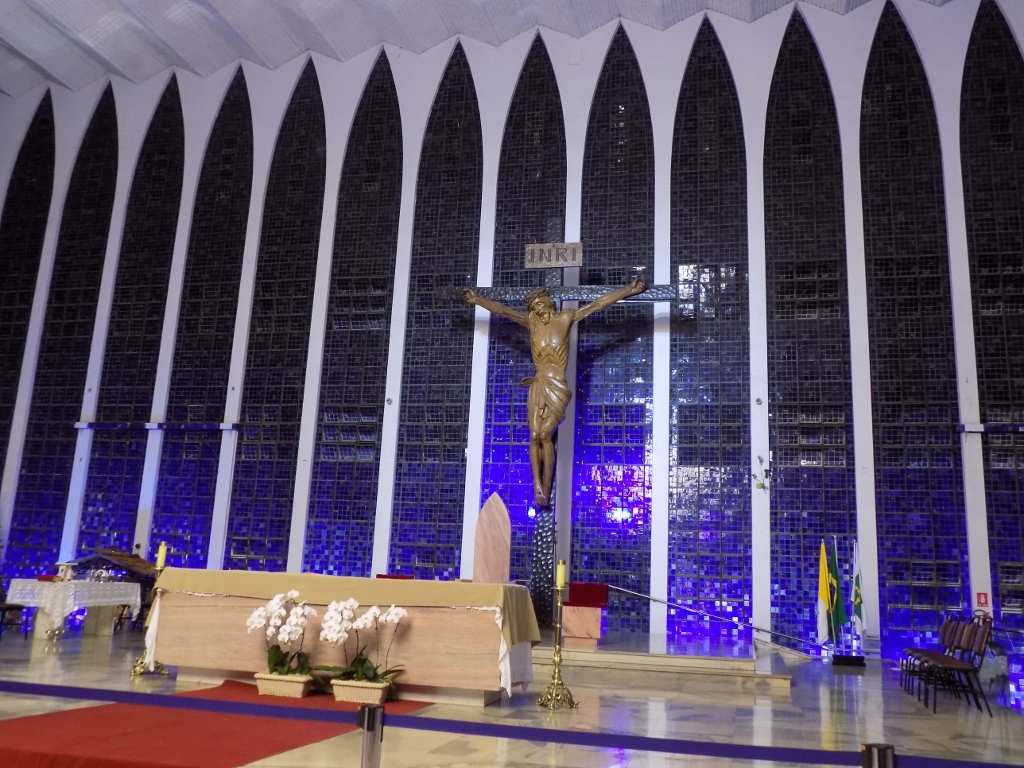 Don Bosco Sanctuary when it is dark outside
Don Bosco Sanctuary when it is dark outside